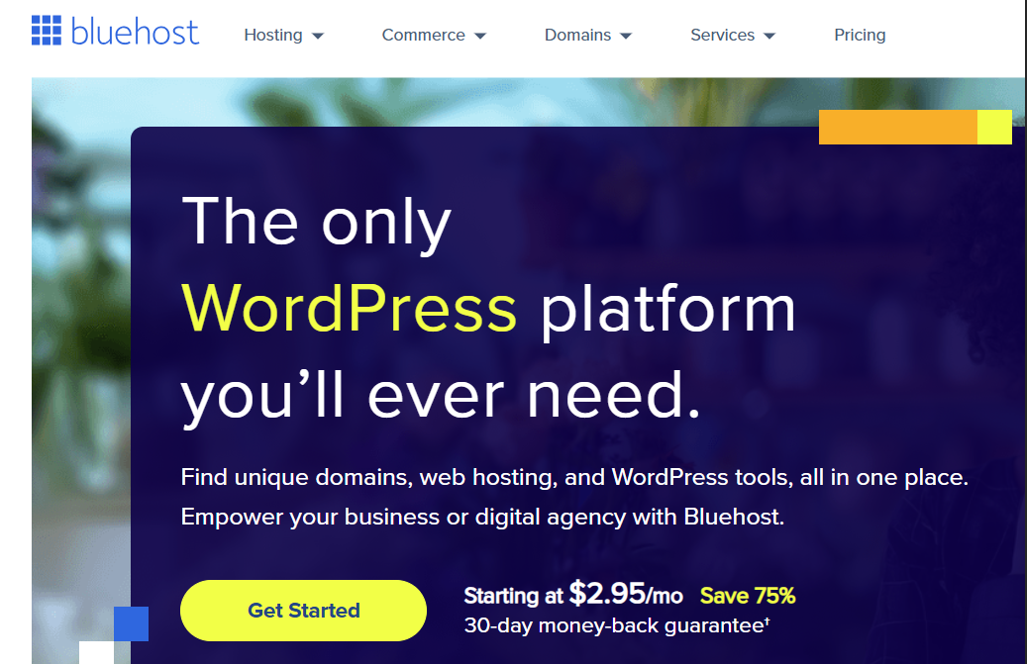The ability to flip a website for profit is quietly becoming a popular way to turn online assets into real cash. The basic idea is simple: buy or build a website, improve it, and then sell it for a profit—usually within a year. This approach appeals because even modest monthly income growth can multiply a site’s value by 20 to 40 times, turning a side project into a serious payday.
In this post, you’ll get a clear roadmap for how to identify promising websites, boost their earning power, and time your sale for maximum return. Whether it’s enhancing SEO, adding new revenue streams, or refining user experience, these steps can help you turn a website into a solid profit in just 12 months. No fluff, just straightforward strategies tested by real flippers who’ve made it work.
Understanding Website Flipping: The Basics Explained
Website flipping is a fascinating way to grow your income by working with digital assets rather than physical goods. It involves taking existing websites or creating new ones, adding value through improvements, and then selling them for profit. Think of it like house flipping, but instead of bricks and mortar, you’re dealing with domain names, traffic stats, and SEO.
The business model is pretty straightforward. You either buy a pre-built website that’s underperforming but has potential, or build a site from scratch, nurture it, and then flip it before the value peaks. Because websites don’t require physical upkeep and can grow steadily with smart improvements, the barrier to entry is much lower than traditional real estate.
Why aim for a 12-month turnaround? This period strikes a balance between building enough traffic and revenue to boost the site’s worth, and avoiding diminishing returns from prolonged effort. Market trends show that SEO improvements and content growth typically take a few months to show results — around 2 to 6 months just to rank for keywords. After that, the site can be evaluated and sold at a much higher price. This timeframe matches the rhythm of how content gains traction and how buyers evaluate website assets.
What Is Website Flipping?
Website flipping mirrors flipping a house or an item at a flea market, but instead of physical goods, you flip websites. The process involves purchasing or building websites, enhancing them, and then selling for a profit.
You can either buy a pre-made blog or build one from scratch if you have time. Making thoughtful improvements, whether that’s boosting traffic, improving design, or optimizing monetization, helps grow the site’s value. If speed is your priority, buying an existing website with untapped potential is the quickest path to profit.
Curious about how to buy and sell websites? Keep reading to dive into the profitable world of website flipping.
A Step By Step Guide To Flipping A Website
Now that you understand the basics, it’s time to get hands-on. Here’s your roadmap to start flipping websites:
- Decide whether to build your own website or buy an existing one.
- If buying, find a promising website that fits your criteria.
- Negotiate the purchase price.
- Improve traffic, design, and profitability.
- Sell the site for a profit.
Each step holds key opportunities to boost your return and prepare your site for a successful sale.
Step 1: Decide On Whether You Are Building It Yourself Or Buying One
Building a site yourself is budget-friendly and perfect if you’re not ready to spend much upfront. You control every aspect, shape the site exactly as you want, and get the chance to grow a genuine audience from scratch. Starting costs can be as low as $3.95 to $100 for hosting and domain registration.
The catch? It takes time and effort. Consistently publishing quality content and refining your site is essential before you see a payout. If you want to speed things up and have some budget, you can buy blog post content from services online.
In contrast, if your calendar is tight and you can invest a bit more upfront, buying an existing blog might make more sense. This approach skips the early growth phase and lets you focus right away on optimization and profit.
Step 2: Find a Website To Buy: Choose A Profitable Niche
How much your flipped site will sell for depends heavily on how relevant and valuable it is. Success demands a niche with real demand and a ready market.
Avoid trying to build a brand-new audience from zero. Instead, dive into existing niches with sizable followings. For example, within the vast food niche, you might pick vegan recipes or healthy eating, tapping into dedicated communities.
Here’s what to look for when buying a site to flip:
- Reasonable monthly traffic: Aim for sites with over 10,000 views monthly.
- Regular, recent content: Indicates an active site that can grow.
- Domain authority (DA): Preferably above 10 for better SEO trust.
- An email list: More than 500 subscribers shows engaged users.
- Good keyword ranking: At least 5 posts in Google’s first page.
Sites with these “good bones” are easier to improve than ones needing total rewrites.
Watch for community-driven websites, often maintained by hobbyists who haven’t yet monetized properly. Taking over their audience and adding monetization can quickly increase value.
Domain names with strong keywords can be goldmines. Owning a memorable domain with popular search terms drives organic traffic and offers resale value.
Look for sites run by solo owners, not big teams. These often sell at better prices and offer better flipping margins.
Lastly, if you want to avoid the hassle of browsing dozens of listings, ask a website broker to find opportunities that meet your criteria. They handle research, vet sellers, and help close deals. Just keep in mind brokers take a commission.
Step 3: Negotiate With The Website Owner
Once you’ve found a target, it’s negotiation time. Reach out and discuss price. Base your offer on stats like traffic, revenue, and domain strength.
Patience is key here. Sellers may not be ready, and some deals drag out or evaporate. Don’t waste time chasing a dead end — there are millions of sites out there.
Be cautious if owners are rushing to sell. Sometimes this means they’re offloading a site with problems. Your job is to identify the issues and factor them into your valuation. Deals priced low can give you room to fix and flip profitably.
When you agree on price, formalize the sale with a contract including:
- Domain name and registration details
- Business name and entity info
- Transfer of third-party accounts and subscriptions
This step protects both parties and makes ownership transfer official.
Step 4: Improve The Website
Congratulations on your new digital property! Now it’s time to boost its value.
Start by assessing the site’s strengths and weaknesses — navigation, design, content quality. Use tools like heatmaps to see user behavior and identify friction points.
Your goal: swell traffic and increase profitability. You’ll want to focus on:
- SEO: Improving rankings with quality content and keywords means more organic visitors.
- Pinterest: A powerful driver of referral traffic if your niche fits lifestyle or visual topics.
- Mobile friendliness: Over half of web traffic comes from phones, so use lightweight responsive themes like Astra or GeneratePress.
On profitability, consider the following monetization methods:
- Display advertising: Earn from views or clicks on ads.
- Affiliate marketing: Recommend products and earn commissions.
- Digital products: Sell your own ebooks, courses, or services.
- Subscription services: Offer premium content for monthly fees.
Choose the methods that fit your niche and skills best. Improving these elements not only makes the site more valuable but also paints an attractive picture for future buyers.
Step 5: Sell Your Website Online
With your site optimized, it’s time to list it for sale on platforms like Flippa or Empire Flippers.
To maximize your chances:
- Write a clear, detailed description — share traffic stats, revenue, strengths. Transparency makes buyers comfortable.
- Skip clichés and fluff. Serious buyers appreciate straightforward, honest listings.
- Be responsive. Prompt replies can close deals faster.
Take your role as a seller seriously to build trust and secure the best possible price.
Benefits Of Website Flipping
Website flipping offers some appealing benefits:
- Low capital investment: Starting costs are minimal compared to many traditional businesses.
- Easy entry: Anyone with basic website know-how can get started.
- Growing demand: Many outdated websites crave expert upgrades, which you can provide.
Downsides Of Website Flipping
There are trade-offs to consider:
- Significant time commitment: Quality flips require months of work, especially for SEO.
- Outsourcing costs: You might need to hire help, impacting your bottom line.
- No guaranteed sale: Market interest can fluctuate, so returns aren’t assured.
Website flipping can be profitable and fulfilling if you stay patient, do your research, and work smart. This step-by-step journey shows it can be accessible, even for beginners.

Photo by Lisa from Pexels
For detailed guides and expert tips on making website flipping work, here’s a helpful comprehensive guide on website flipping and insights on how profitable flipping websites can be.
Sourcing and Evaluating Profitable Website Opportunities
Finding the right website to flip isn’t just a game of chance—it’s a strategic hunt. You’re not just looking for any site; you want websites brimming with potential profit that others might overlook. The right pick can set you up for a dazzling return, while a rushed choice might drain your energy and money. Let’s walk through where to uncover these golden opportunities, what to scrutinize before sealing any deals, and the actual money waiting to be made in website flipping.
Where to Find Websites to Buy
If you want to dive into website flipping, your first stop should be online marketplaces built just for this purpose. The two giants you need to know are:
- Empire Flippers
This marketplace vets every listing. That means you won’t waste time on sites with suspicious traffic or revenue claims. It’s perfect if you want a reliable, risk-mitigated investment. Expect to pay a premium for that peace of mind.
Caution: Because listings get screened, prices can be higher than on other platforms. - Flippa
Flippa offers a wide range of websites, from starter blogs to seasoned e-commerce stores. This variety is gold for bargain hunters and flippers looking for diamonds in the rough.
Caution: Listings aren’t always verified. You’ll need to bring your detective skills—or better, follow strict due diligence.
Beyond these marketplaces, private deal sources and communities are treasure troves if you like cutting deals off the beaten path. Facebook groups, for example, connect buyers and sellers directly, often resulting in lower prices and personal negotiations. However, trust and transparency vary, so tread carefully.
Additionally, website brokers can help source high-quality sites tailored to your needs. They handle negotiation and vetting for a commission, easing your workload but adding upfront costs.
Conducting Due Diligence: What to Check Before You Buy
You’re about to part with your money, so you better know what you’re buying. Think of due diligence as your shield against buyer’s remorse. Here’s the checklist to run through:
- Backlink Quality: Not all backlinks are created equal. Good backlinks come from reputable sites and boost SEO; bad ones might trigger penalties from Google. Use tools like Ahrefs or Moz to audit the backlink profile.
- Verify Existing Revenue: Don’t take revenue claims at face value. Ask for proof—bank statements, PayPal records, or even tax returns. Fluctuations are normal, but consistent income trumps sudden spikes.
- Content Originality: Copied content tanks SEO and scares off buyers. Use tools like Copyscape to verify that content is original and quality-driven.
- Traffic Quality and Sources: Are visitors real people or bots? Organic traffic from search engines or social media beats paid traffic from ads. Analytics screenshots help you get the full picture.
- Red Flags to Spot:
- Sudden drops in traffic or revenue
- Over-reliance on a single traffic source or client
- Poor website design or outdated technology
- Missing or questionable legal documentation
Spending hours on thorough research now can save you thousands later.

How Much Money Can You Make Flipping Websites?
Is website flipping a lucrative business? Absolutely—but it’s not an instant cash machine. How much you make depends on many factors: traffic, revenue, niche, site age, and monetization strategies.
Buyers generally use a website multiplier based on monthly profit, multiplying that by roughly 35 to 36 to estimate the sale price. For example, if a site nets $1,000 a month, it might sell for around $35,000 based on this multiplier.
What influences this multiplier?
- Age of the domain
- Quality and freshness of content
- Presence of digital products or subscription models
- Diversity in traffic sources and revenue streams
- Strength and quality of backlinks
The more of these you check off, the higher your multiplier and the bigger your payday. With a few websites flipping regularly, hitting six figures annually is totally within reach.
Check out sites like Empire Flippers and Flippa to see what real websites are selling for and get inspired!
Is Website Flipping Profitable?
Short answer: yes, and it remains as relevant as ever.
If your website pulls in $1,000 monthly, selling at 35x means a tidy $35,000 sale price. Nail your SEO, add monetization, and boost traffic, and that value climbs. Buyers crave sites that are almost turnkey — minimal tweaks needed but with robust cash flow potential.
Patience and know-how turn website flipping into a steady source of passive income. With market demand holding strong, flipping isn’t just a side hustle; it’s a credible income stream. Curious about your site’s worth? You can use free online website valuation tools to get a quick estimate and start plotting your flip strategy.

What Does It Cost To Set Up Or Buy A Website?
Starting fresh? Hosting and domain registration costs typically run between $3.95 and $100 to get off the ground. But buying an established site demands more wallet courage — expect to invest thousands for profitable sites.
Don’t shy away from negotiating. Many sellers price with wiggle room because they want out or underestimate their asset’s potential. A sharp eye and a firm offer can land you a bargain.
Best Niches That Are In Demand
Some niches shine brighter than others in website flipping. Follow the crowd to where buyers are focused:
- Travel
- Food (especially cooking and baking)
- Business & Personal Finance
- Personal Development
- Health and Wellness
- Technology
- Women’s Fashion
- Pet Products
- Beauty and Home Improvement
- Smart Accessories
- Parenting
Steering clear of trendy fads—say goodbye to Tamagotchis and fidget spinners—and steering toward evergreen topics will give your flips greater staying power.
Building vs Flipping A Website, Which Is Better?
Choosing to build or flip depends on your resources and patience.
- Building from scratch lets you craft every detail your way. It’s cheaper upfront — buying a domain name beats purchasing a full site — but expect longer wait times for traffic and revenue to mature.
- Flipping means acquiring something that already has a footprint. Some sites might be fixer-uppers needing elbow grease, but others could be near-ready for sale with minor tweaks. The work can be intense but often faster to payoff.
Both paths offer rewards. Your choice aligns with whether you want a creative journey or a more immediate return.

Photo by cottonbro studio
This section will prepare you for the exciting and strategic hunt of snatching up undervalued websites and turning them into profit machines. Next up, we’ll cover how to boost your purchase’s value effectively and ensure your flip commands the highest price possible.
Maximizing Growth: Traffic, Content, and Monetization Enhancement
Turning a website into a profitable asset within a year means more than just patching holes—it demands a sharp focus on growing traffic, expanding content intelligently, and fine-tuning revenue streams. This section walks you through how to audit and amplify your content smartly, then diversify income sources so each visitor pays off a bit more. Ready for solid growth and steady profits? Let’s break it down.
Content Strategy and Expansion
Before piling on new content, evaluate what you already have. Start with a content audit: identify your strongest posts and pinpoint those underperforming or outdated. This is your foundation.
Next, fill the gaps. Use keyword research to uncover topics your audience is searching for but aren’t yet covered or have shallow treatment on your site. Tools like Google Keyword Planner or Ahrefs can spotlight these opportunities.
Don’t stop at blog articles. Diversify with fresh content formats like:
- Video tutorials or reviews, engaging visitors who prefer visual learning.
- In-depth guides or PDF downloads that deliver more value and help build your mailing list.
- Infographics and quick tip sheets that catch the eye and get shared more often.
Artificial intelligence can be your sidekick here, speeding up content creation and ideation. AI tools generate draft posts, summarize research, and optimize metadata, helping you scale without burning out.
Scaling content this way doesn’t just grow traffic; it improves authority, keeps visitors coming back, and signals to search engines that your site is active and valuable.
Monetization: Diversifying and Scaling Revenue Streams
Traffic without a profitable funnel is like a runway without a plane. To flip a website successfully, maximize the money each visitor delivers.
Start by reviewing your existing monetization. Display ads, such as Google AdSense, remain a staple, but you can upgrade with programmatic advertising that targets visitors better and bumps up revenue per click.
Affiliate marketing is a powerful partner. Choose programs relevant to your niche—ideally those with recurring commissions or high-ticket items. Build authentic product reviews or use comparison content to boost conversion.
If you’re ready to move beyond ads and affiliates, consider these revenue streams:
- Digital products: ebooks, courses, or exclusive tools that solve problems your audience faces.
- Memberships or subscription content: give loyal readers perks like ad-free browsing, insiders-only posts, or monthly newsletters.
- Sponsored content or brand partnerships: once your traffic grows, brands will pay premium for exposure.
To increase average revenue per user (ARPU), upsells and cross-selling matter. Try bundling digital products or integrating microtransactions like donations and “tips” for valuable content. Make sure your calls to action are clear and compelling.
Together, these tactics build a balanced portfolio of income. This not only cushions against market changes but also makes your site more appealing to buyers eyeing consistent, scalable profits.

For further insights on growing website traffic efficiently, check out this LinkedIn guide on effective podcast marketing to boost website visits. Meanwhile, strategies to maximize revenue streams are well outlined in this Indeed career advice article on increasing revenues.
The Exit: Timing and Selling Your Website for Maximum Profit
Knowing when and how to sell your website can be as crucial as building it in the first place. The exit phase demands clarity, precision, and a presentation that makes buyers eager to take over. It’s about preparing your asset thoroughly, finding the right buyers, and closing deals confidently, all while maximizing your profit and minimizing hurdles. Let’s break down this last but vital step of your website flipping journey.
Preparing for Sale: Documentation and Presentation
Think of your website as a luxury item in a boutique. Buyers want proof it’s worth their investment. If you expect a serious offer—and the best price—don’t skimp on documentation or presentation. Here’s what savvy buyers look for:
- Traffic and Revenue Proofs: Screenshots and exports from Google Analytics and payment gateways must match what you claim. Consistency builds trust.
- Growth Story: Show how the website evolved. Graphs and timelines highlighting traffic increases, content additions, and revenue milestones tell a compelling story.
- Analytics Access: Offering temporary access to analytics platforms reassures buyers with transparency.
- Clean Operations: Demonstrate the site is well-maintained—no broken links, spam comments, or outdated plugins. Show a lean, efficient setup.
To make your website irresistible:
- Organize all documents in one easy-to-navigate folder or data room.
- Create a clear, engaging sales page detailing key stats and strengths.
- Provide screenshots, but back them up with live or recent data access.
- Address minor blemishes honestly and explain how they can be easily fixed.
A polished, professional approach sets you apart, especially in marketplaces crowded with listings that gloss over important details.
Finding Buyers and Closing the Deal
The marketplace for websites is buzzing, but success comes down to where and how you list, plus your readiness for the negotiation and transfer process.
Listing Strategies: Start where your target buyers are active. Large marketplaces like Flippa and Empire Flippers attract serious entrepreneurs ready to invest. Smaller or niche sites like Website Broker or Web Hosting Talk can suit sites in specific industries or price ranges.
Marketing Your Site: Write straightforward, compelling listings. Use real numbers, testimonials if available, and highlight potential growth avenues buyers can explore. Putting yourself in the buyer’s shoes helps craft appealing offers.
The Closing Process: Once a buyer bites, it’s time for escrow services to hold funds securely. This protects both seller and buyer until the transfer completes. The transfer usually involves handing over:
- Domain registration credentials
- Website hosting accounts
- Content management system (CMS) logins
- Advertising or affiliate accounts
After the transfer, remaining obligations can include short-term support or tutorials for the new owner. Clear communication is key to a smooth handoff and happy buyers.
Where Can I Buy and Sell Websites?
Websites for flipping platforms make the entire process easier, offering tools for listing, marketing, and secure payments. Here are some reliable sites you should know about:
- Flippa
The pioneer in website marketplaces, Flippa uses an auction system where buyers bid openly. It’s perfect for all budget levels and has a sliding commission fee from 5% to 10% depending on the sale price. - Trademysite (HugeDomains.com)
One of the largest domain marketplaces. It offers over 350,000 domains and provides resources for domain valuation. Its client base spans globally, including the US, Australia, and Malaysia. - Afternic
Afternic lists your site to multiple partner platforms, including GoDaddy. Transfers are usually smooth but watch out for a commission fee tiered by sale price. Some users spot delays in escrow processing and tricky navigation. - Freemarket
A new entry from freelancers.com’s team, Freemarket stands out by charging only a 5% commission and no listing fees, making it ideal for sellers keen to maximize earnings. - Web Hosting Talk
More of a community forum than a marketplace. You’ll find discussions and direct sales here. It requires patience but can yield unique buyer-seller connections. - Website Broker
This platform skips commission fees entirely, charging a flat listing fee ($9.99 standard or $14.95 for premier exposure). It’s cost-efficient if you want control over your sale’s profitability. - Empire Flippers
Trusted for vetting listings thoroughly, this marketplace focuses on established, profitable websites. Their vetting ensures quality, but prices are generally premium for peace of mind.
Choosing the right platform depends on your website’s value, niche, and your needs for speed or security. Wherever you list, transparency and good presentation set you on course for a successful sale with maximum return.
For more about exploring these marketplaces, dive into the Empire Flippers site for vetted listings, and browse Flippa’s marketplace for a wider range of opportunities. When negotiating your deal, understanding tactics like setting competitive prices, being clear about offer limits, and preparing for smooth post-sale support can tip the scales in your favor—you can find insightful tips on mastering this in this negotiation guide.
This exit strategy, when executed well, is the final key to unlocking the full potential of your website flipping efforts.

Case Studies: Real 12-Month Website Flipping Success Stories
Turning a purchased or built website into a profitable asset within 12 months is more than just a plan—it’s a story of smart moves, patient tweaks, and well-timed sales. These case studies offer a peek behind the curtain, showing exactly how real website flippers carved out impressive profits. You’ll find practical takeaways to inspire your journey and spot the moves that really pay off.
Case Study 1: From $2,700 to $24,000 in Less Than a Year
A flipper bought a fixer-upper site for $2,700 with moderate traffic but weak monetization. The first months focused on:
- Improving site speed and design
- Adding targeted, SEO-rich content
- Implementing affiliate marketing aligned with the site’s niche
Within six months, the traffic doubled thanks to keyword-focused blog posts and better on-page SEO. Affiliate commissions and display ads began generating steady income. By month 12, the website’s monthly revenue hit about $700, justifying a sale price near $24,000—roughly 34 times the monthly profit.
Takeaways:
- Target underperforming sites with solid domain authority.
- Invest in SEO first; traffic growth is the foundation.
- Monetize smartly with low-maintenance streams like affiliates and ads.
- Improvements compound quickly when done early.
This story shows how patient, focused work can multiply value without flashy, hard-to-scale work.
Case Study 2: Building a Niche Blog for $500 and Flipping at $8,500
One savvy flipper built a niche blog from scratch with just a $500 initial investment, covering hosting, domain, and freelance content writing. The website targeted a specific hobbyist community, which is great for engagement and affiliate sales.
Key actions over 12 months:
- Publishing 2-3 quality posts weekly targeting long-tail keywords
- Setting up email marketing to build a loyal subscriber base
- Introducing affiliate reviews of products popular with the audience
Traffic climbed steadily, boosted by Pinterest and organic Google search. By month 10, affiliate commissions started covering expenses and turning profit. The site sold in month 12 for $8,500, a handsome return for a modest investment.
Takeaways:
- Niche focus attracts dedicated, money-ready audiences.
- Content consistency is key—slow and steady wins the race.
- Email marketing amplifies traffic value and buyer appeal.
- Small budgets can still lead to strong flips with smart targeting.
Case Study 3: Flipping a Local Service Website from $1,000 to $14,000
A local business website owner wanted out and sold their site for $1,000. The buyer revamped the site by:
- Updating the design to modern, mobile-friendly standards
- Expanding local SEO efforts including Google My Business and citations
- Adding a booking system and optimizing call-to-action placements to increase leads
Traffic didn’t skyrocket but became more qualified, increasing monthly contact forms and calls. The website generated stable advertising revenue plus sponsorships from nearby businesses. This mix increased monthly profit to roughly $400. Just under a year later, it sold for $14,000—a 14x return.
Takeaways:
- Local service sites can flip well when optimized for conversions.
- Quality traffic matters more than quantity; targeted visitors pay off.
- Simple tech upgrades and local SEO can have outsized impact.
- Adding functional tools like booking systems boosts buyer interest.

Photo by RDNE Stock project
These stories prove the blueprint: pick your strategy (buy fixer-upper, build niche blog, or optimize local service), double down on traffic and monetization, and hold to that 12-month timeline. Each approach delivers profit but requires focused effort in different areas. When you apply these lessons to your flips, you’re not just guessing—you’re working with a clear profit pathway.
Website Flipping Courses I Can Take To Teach Me?
If you’re serious about turning website flipping into a reliable income, investing in the right course can save you months of trial and error. Website flipping isn’t just about buying and selling; it’s about understanding the market, spotting hidden gems, scaling them smartly, and timing your exit. The right course delivers those insights straight from experienced flippers who have earned real profits. It’s like having a mentor guide you through the maze—spotting pitfalls, revealing tactics, and speeding your climb.
Courses vary widely, from quick overviews to deep-dive masterclasses. If you want to master this craft, here are some top options that bring solid structure and proven strategies to your learning.
Mushfiq’s Deep Dive Course on Website Flipping
Mushfiq, the founder of The Website Flip, knows website flipping inside and out. He’s flipped over 175 websites since 2008, juggling 10 to 15 flips a year with consistent success. This isn’t theory—this course spills real data, real deal breakdowns, and step-by-step tactics refined through years of flipping.
What stands out about Mushfiq’s course? It’s intense and packed with details:
- Breaks down the four stages to flip any website for solid profit
- Shares data from 39 flips, including purchase/sale prices, timelines, and niches
- Shows exact methods to find profitable sites, avoiding scams and traps
- Gives you immediate action steps for post-purchase growth
- Reveals hidden factors that raise a website’s value—info you rarely find elsewhere
- Walks you through valuation and how to negotiate better deals
- Teaches how to position your site to maximize its perceived worth
- Insider tips for convincing buyers a site is a “must-have” investment
This level of transparency and depth is rare, making it more than just a course—it’s a blueprint for serious flippers. Mushfiq cautions it’s best suited to those already comfortable with blogging fundamentals, as it’s not a “beginner’s guide” to website creation or basic monetization.
If you want to explore the course yourself and unlock these insights, check out Mushfiq’s Website Flipping Course.
Other Popular Website Flipping Courses
If Mushfiq’s course is your deep dive, there are others that offer good starting points or complementary angles.
- Udemy’s Domain and Website Flipping Courses
These courses often focus on basics like domain valuation and flipping smaller websites. They are budget-friendly and cover essentials like market research, buying strategies, and quick flip tactics, perfect if you want to dip your toes with guided help. - Surges.co Website Flipping Course
This course balances strategy and practical steps with modules that cover the lifecycle of buying, scaling, and selling websites. If you appreciate structured learning with video tutorials and actionable templates, this is worth a look.
When choosing a course, consider your experience level, budget, and how hands-on you want your learning to be. Courses that use real case studies and data, like Mushfiq’s, tend to be more valuable for long-term success rather than glossy promises.

Why Take a Website Flipping Course?
Think of website flipping courses like a tailored roadmap—you wouldn’t set off on a cross-country trip without a GPS, right? These courses save you the guesswork by:
- Showing you where to find the best websites to buy
- Teaching how to spot risks before you commit cash
- Explaining the exact steps to grow value quickly
- Providing negotiation skills that can save you thousands
- Guiding you on how to package and present your site for maximum sale price
Most importantly, they help you avoid costly mistakes that drain your budget and morale.

Photo by Lisa
To learn more about Mushfiq’s approach and other courses, visit The Website Flip’s official page for detailed course information and to start your flipping journey armed with knowledge and confidence.
Marketplaces and Platforms for Buying and Selling
Finding the right website often means knowing where to look and who to trust. The marketplaces below are favorites among experienced flippers because they combine variety with verified data, giving you a clearer picture before you spend.
- The Website Flip
This site is a treasure trove for anyone serious about flipping. It offers vetted listings and delivers deep insights into how sites perform and what to expect. They also share case studies and handy guides that teach how to buy, grow, and sell websites profitably. It’s like having a flipping mentor in your corner. Check it out here. - Flippa
Flippa is the classic marketplace where you’ll find everything from starter blogs to e-commerce gems. Its auction-style listings mean there’s often a chance to snag a deal. Just be sure to do extra homework since not all listings are vetted. - Reddit Communities
Yes, you read that right. There are active subreddits where flippers share insights, post deals, and discuss market trends. The community vibe helps you stay current and learn from real experiences. One popular hub is r/webdev’s discussion on profitability, which frequently points to trusted marketplaces like Flippa and Ecomswap. A good thread to read is How profitable is flipping websites?.
These platforms aren’t just where deals happen; they’re where you can sharpen your radar for spotting winners and avoid traps.

Tools for Due Diligence and Growth
Having solid tools is a must to uncover a website’s true value and potential for growth. Combine analytics, keyword research, and SEO auditing tools to make informed decisions.
- Google Analytics and Google Search Console (free tools to verify traffic and indexing status)
- Ahrefs or Semrush (for backlink analysis and keyword research)
- Copyscape (to check for duplicate content before buying)
- Profit calculators and valuation tools available on marketplaces like Empire Flippers help estimate website worth.
Using these tools keeps you grounded in data, so you’re less likely to fall for inflated claims or miss key growth opportunities.
These resources create a strong foundation for your website flipping ventures. You get marketplace access to pick the right sites, courses to sharpen your skills, and tools to measure and boost value. With these in your corner, you’re better equipped to turn a website from a simple asset into a profitable sale within 12 months.
FAQs on Website Flipping
Website flipping can feel like a new frontier for many, sparking plenty of questions along the way. Whether you’re just curious or seriously considering jumping in, having clear answers to common queries sets you up for success. Let’s break down the essential FAQs on website flipping to clear any confusion and get you confident about the journey.
Is Website Flipping Legal?
Absolutely yes, website flipping is legal. Think of it as buying a car, fixing it up, and selling it for more money. You’re simply buying an asset—in this case, a website—improving it, and then selling it. It’s a straightforward, legitimate business practice without any shady undercurrents.
The key is sticking to ethical practices like ensuring content originality, respecting copyrights, and transferring ownership properly. Unlike domain squatting, which can brush against legal issues, website flipping is perfectly above board. For a detailed outline on legality, check out this concise guide on website flipping legality.
What Is Domain Flipping?
Domain flipping is similar but more narrowly focused. It involves buying domain names at low prices and selling them at higher prices. Often, these domains are memorable or keyword-rich, making them valuable to brands wanting a strong online identity.
The key difference is that domain flipping involves little to no website content or development. It’s more like real estate investing in land parcels—buy and sell the address itself rather than the house. Domain flipping can be profitable, but it requires a strong eye for valuable domain names and market demand.
How Does Someone Get Started With Website Flipping?
Starting a website flipping journey is more accessible than you think. Here’s a simple path:
- Learn the fundamentals. Taking a website flipping course can give you a strong foundation and help you avoid rookie mistakes.
- Research and read. Dive into trusted blogs, guides, and forums about website flipping strategies.
- Take action. Either start by building a small site yourself or look for underpriced websites to purchase and improve.
This approach helped many flippers grow their skills and confidence before making serious investments. You can explore some great resources and courses mentioned above for an easy jumpstart.
How Do You Make Money With Website Flipping?
The money-making secret is buying low, improving smartly, and selling high. You’re not just flipping a website—you’re flipping value. The process hinges on:
- Increasing monthly revenue (through ads, affiliates, or products)
- Growing organic traffic with better SEO and content
- Enhancing user experience and site features to appeal to buyers
Once a website’s monthly profit rises, so does its sale price, often calculated as a multiple (like 30x or 35x) of the monthly income. Sell when your site looks like a great investment, and you’ll pocket the difference between what you paid and sold it for.
Should You Invest in the Website Flipping Business?
This depends on your own situation. Consider:
- Skills: Do you have SEO, content, or marketing skills to boost a site’s value?
- Time: Flipping isn’t passive. It takes months of effort to see growth.
- Money: You can start cheaply if you build sites yourself, or invest more to buy established ones.
Website flipping offers a unique chance to scale without hefty upfront capital compared to physical real estate. If you have patience and willingness to learn or outsource, flipping can be an excellent investment with lower risks and costs.
How Much Money Do You Need to Start Website Flipping?
Starting with less than $100 a year is possible if you build and grow websites yourself using free or low-cost tools, handling content creation without outsourcing.
However, buying established websites often requires thousands—sometimes tens of thousands of dollars—depending on traffic, revenue, and niche. You can scale your investment as you grow confidence and funds.
How to Sell a Website?
Selling smoothly means packaging your website well. Include the following in your sale package:
- Domain name and credentials
- Website access and CMS login
- Ownership of analytic tools like Google Analytics
- Access to social media accounts associated with the site
- Proof that content and images are original or properly licensed
- Documentation for any ongoing processes or maintenance
Professional preparation eases buyer concerns and speeds up transactions, maximizing your sale price.
There’s no need to hesitate—website flipping is a clear, legal path to earning from your skills and time. Make smart moves, grow your digital assets, and watch your profit take shape within a year.

What are Some Common Mistakes to Avoid When Flipping Websites?
Flipping websites promises profit and growth, but it also hides traps that can turn a promising flip into a costly headache. Skipping crucial steps or rushing through can cost time and money. Knowing what stumbles to dodge keeps your flipping journey smooth and your profits healthy. Here’s a clear guide to the most frequent missteps you want to avoid.
Skipping Proper Due Diligence and Research
Imagine buying a car without a test drive or service history. Risky, right? The same holds for websites. Diving into a purchase without deeply analyzing traffic, revenue, content quality, and backlink profiles is a fast track to disappointment. Always:
- Review consistent traffic through Google Analytics.
- Verify revenue with bank or PayPal statements.
- Check the website’s backlink health using tools like Ahrefs.
- Scan for original content to avoid SEO penalties.
Taking time to verify keeps surprises at bay and protects your investment. You can read more about why this matters in this 10 Things to Know About Website Flipping guide, which breaks down pitfalls to watch out for.
Overpaying Without a Clear Valuation
The simplest way to lose money is to pay more than a website’s worth. A good rule of thumb is to offer 35 to 40 times the monthly profit, not the revenue. Revenues can be misleading if expenses or traffic drops aren’t visible.
Don’t hesitate to negotiate or walk away if the price feels inflated. Remember: buyers can spot desperation from a mile away. Keep your budget firm, back it with data, and use negotiation to your advantage.
Not Adding Unique, SEO-Optimized Content
Content is the heart of a website’s value. Yet many flippers miss this crucial step, sticking with existing or non-unique posts that don’t draw traffic. Fresh, keyword-targeted, and valuable content fuels ranking growth and audience engagement.
When improving a site, audit current content for gaps and rewrite or add posts with strong SEO focus. Tools like Google Keyword Planner help find relevant keywords that attract visitors. Don’t just fill pages—create content that answers real user needs and positions the site to outrank competitors.
Relying on a Single Traffic or Marketing Channel
Success depends on diverse traffic. Putting all eggs in one basket, say organic search alone, slows growth. Explore multiple channels:
- Social media platforms (Pinterest and Instagram work wonders for lifestyle niches).
- Email marketing to nurture loyal followers.
- Paid ads strategically to jumpstart traffic or push product sales.
A broader, balanced approach builds resilience, so if Google tweaks its algorithm or social trends shift, your earnings don’t vanish overnight.
Selling Too Early Before the Site Has Matured
Patience is a flipper’s friend. Websites take time to grow in traffic and profit. Jumping the gun on a sale means leaving money on the table.
Focus on hitting stable, increasing revenue trends for several months before selling. Buyers want proof that growth is sustainable and the site isn’t a flash in the pan. If your goal is to profit substantially, waiting allows SEO improvements and marketing efforts to pay off fully.
Ignoring Communication and Transparency During the Selling Process
When the time comes to sell, don’t vanish or make buyers jump through hoops. Flippers often make the mistake of poor communication, which can kill deals and damage reputation.
Be clear, prompt, and honest about all stats and site conditions. Transparency builds trust and often leads to quicker offers and higher sale prices. Buyers appreciate detailed documentation and realistic knowledge of any site issues.
This point is highlighted in the 4 Stupidest Mistakes to Avoid When Website Flipping article that covers how active communication shapes deal success.

Avoiding these common mistakes sharpens your flipping game and positions your websites for real profit. Keep your decisions measured, your work thorough, and your sales transparent. The path is clearer and far more rewarding when you dodge these pitfalls.
Website flipping offers a clear path to turning digital real estate into fast-growing profit. By buying or building with a plan, focusing on solid traffic growth, smart content, and diverse monetization, you can significantly raise a site’s value within 12 months. The key steps—finding the right site, improving its performance, and timing your sale—work like a formula for success when executed carefully.
Profit margins of 30% to 50% and valuation multiples of 30x or more on monthly earnings show this business is not just potential, but profitable reality in 2025. Starting costs remain low, making it accessible whether you go big or keep it lean. With attention to detail, steady effort, and strategic moves, flipping websites becomes more than a side hustle—it’s a reliable income stream.
Step forward with intention. Use tools, take courses, learn from real flips, and prepare your sites thoroughly. Your first flip won’t just teach you lessons—it can set the foundation for a growing portfolio. The digital market waits for those ready to create value and claim their share. So go ahead—start flipping, and watch how months of focused work can turn into a rewarding payoff.















